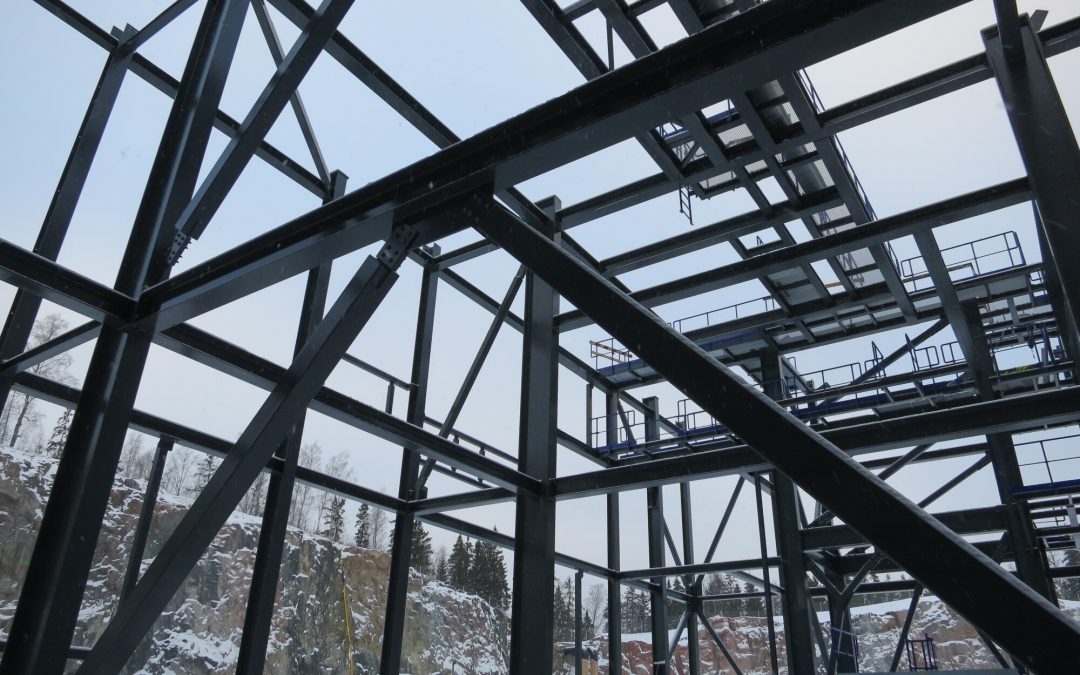The United States often produces over 1.7 million net tons of steel in just a week.
Steel is essential for construction and fabrication, from hardware to roofing. Another important application in construction is steel framing.
Choosing the best steel framing for your project can maximize construction speed and lower the cost of building materials. Which steel framing is best depends on the size and function of the building.
Construction sites and building projects typically use one of two types of steel. 12 gauge and 14 gauge steel framing are the most commonly used metal building framing.
If you’re wondering which material you should use for your building, this guide will help you choose. Read on to learn everything you need to know about choosing steel framing!
Common Uses for Metal Buildings
Metal buildings are popular with both hobbyists and small business owners. They are inexpensive and easy to construct and have a wide variety of applications.
A metal building is suitable for industrial and service businesses like automotive services, HVAC, and fabrication. However, larger buildings can be used for commercial storage and even recreation centers.
In addition to industrial businesses, metal buildings also work well for commercial applications. Metal buildings make great retail locations and office spaces.
Although the exterior of a metal building can look more industrial, you can easily customize the interior. Industrial services may prefer to keep the inside plain, while retailers may want a more polished look.
Besides business purposes, individuals often commission custom metal buildings for hobbies like woodworking or restoring cars. Additionally, private owners may use metal buildings as a garage for regular parking or storing recreational vehicles and boats.
Steel Framing vs Wood Framing
In addition to steel, contractors often use wood to frame buildings. Each material has advantages and disadvantages.
Although steel is a heavier material than wood, a steel frame is often lighter.
Because of steel’s strength compared to wood, it takes much more wood to achieve the same stability as a steel frame. The result is a steel frame often weighing less overall than a wooden frame.
While wood is a heavier option, many contractors have more familiarity with wood frame construction. As a result, general construction firms will sometimes charge less for projects using wood framing.
Wood is usually a cheaper material, although lumber prices have surged since 2021. Do your research to determine whether steel or wood will be cheaper.
The upfront cost of wood framing is less than steel, but you’ll run into more maintenance costs over time. Steel is more resistant to natural disasters, pests, rot, and other factors that can damage wood frames.
A knowledgeable contractor will be able to advise you on which material is best for your building frame.
The Steel Gauge System
If you’re going to use steel to frame a building, you need to know what the different measurements mean.
Steel is measured by width and length, most commonly using inches. In addition to these dimensions, steel uses a gauge number to measure its thickness.
If you have any experience with firearms, the gauge system will likely be familiar. In general, the lower the gauge number, the thicker the material.
Steel gauges range from 38 to 0000000. 38 means the steel is 1/160 inches thick and 0000000 represents a thickness of 1/2 inch.
Steel manufacturers generally use gauge instead of fractional inches to represent thickness. This is due to the precision with which gauges are measured.
Just the gauge of steel won’t tell you anything else about its dimensions in general. Steel building frames, however, have a universal standard for the size of framing materials. Therefore, 12 gauge framing and 14 gauge framing are always the same widths.
Steel sections that use a gauge number include sheet metal, tubing, and pipe. Square tubing is the most common section used for steel frames.
The two materials we’ll be looking at in this guide, 12 gauge steel and 14 gauge steel, are roughly 0.03 inches apart in thickness.
Differences Between 14 Gauge and 12 Gauge Steel Framing
Now that you have a handle on steel gauges, we can examine the difference between 12 gauge framing and 14 gauge framing. There are three important differences between these steel gauges: Width, price, and durability.
Width
While 12 gauge square tubing has thicker walls, the standard framing tube is narrower overall than 14 gauge.
Standard 14 gauge framing is 2 1/2″ X 2 1/2″, while 12 gauge is 2 1/4″ X 2 1/4″. This measurement is the outside diameter, as in the width from outside to outside.
Price
Since 12 gauge steel is thicker, it requires more material to produce. 12 gauge steel, due to its thickness, has a higher cost per inch than 14 gauge.
There are other factors besides gauge that affect the exact cost of materials. Different varieties of steel, like stainless and galvanized, for example, all have different costs.
Durability
There are several ways to measure the durability of building materials. The most common are physical properties called tensile strength and hardness.
Tensile strength is a material’s ability to bear weight or some other kind of tension without bending. Hardness, on the other hand, is a material’s ability to resist scratching and indentation.
Steel is a popular building material because it has good tensile strength and hardness compared to its weight. So which is more durable: 12 gauge steel or 14 gauge steel?
It shouldn’t surprise you that 12 gauge steel framing, the thicker, more expensive material, is more durable. Although both gauges have the same hardness, 12 gauge framing can bear more weight without yielding.
How to Choose the Right Steel Gauge
The first thing you should consider when choosing a steel gauge is your budget. 14 gauge steel is the cheaper option, so it’s best for projects with a hard budget limit.
That said, 14 gauge steel is suitable for most residential applications like garages, hobby shops, and carports. It can also withstand common weather patterns like wind and snow with proper bracing.
Despite the additional cost of 12 gauge steel, there are several scenarios where you should consider it.
Areas with severe weather conditions warrant stronger framing material. In fact, some states even require 12 gauge steel for certain applications. Be sure to check local construction regulations.
Weather patterns that you should keep in mind include hurricanes, tornadoes, and snow. States in the midwest and south especially should use 12 gauge steel to avoid damage from strong winds.
Another reason to consider 12 gauge steel is for industrial buildings. If you plan to use a metal building for commercial purposes, you should use 12 gauge steel.
Fabrication and automotive shops, for example, often use overhead cranes. The weight will put too much strain on 14 gauge steel frames.
Even though 14 gauge steel is suitable for most light applications, you may prefer 12 gauge just to be safe. On top of being a safer option, 12 gauge steel will add to the resale value of the building.
The size of your building will also affect the steel gauge you should use. For any metal building taller than 10 feet or wider than 30 feet, we recommend 12 gauge framing.
Types of Steel
In addition to gauge, the chemical composition of steel affects the frame. Most commonly, metal building frames are made of galvanized steel, but carbon steel and stainless are available as well.
Carbon steel, also called mild steel, is the most inexpensive option. However, you will want carbon steel painted if it will be exposed to the elements since it is susceptible to rust.
Galvanized steel has a zinc coating that makes it resistant to corrosion. Because it doesn’t easily rust, you can leave galvanized steel exposed.
Stainless steel is often more expensive than carbon and galvanized since it is an alloy. Manufacturers can get steel alloyed with different compounds depending on the application.
For most metal buildings, the middle ground of galvanized steel is usually a good option. Galvanized steel balances the affordability of carbon steel with the corrosion resistance of stainless.
Build the Perfect Metal Building
Choosing between 12 gauge and 14 gauge steel comes down mainly to price and strength.
For light applications, 14 gauge steel is certified in most states. If you just want an extra garage or carport at your home, 14 gauge is likely more than strong enough.
Even though 12 gauge steel is more expensive, it offers much more durability. For commercial buildings and buildings in high-wind areas, 12 gauge steel framing is a smart choice.
No matter what your metal building needs are, Elite Metal Structures has you covered. We offer specialized construction services, and affordable, high-quality buildings.
Contact us today to learn how we can help you build the perfect metal building to protect your property!

